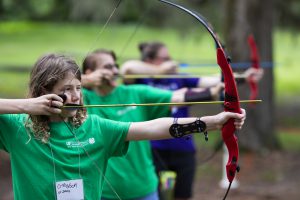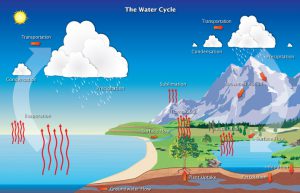4-H volunteers and professionals often find themselves teaching a wide variety of audiences with different needs for learning. Keeping youth of different ages and abilities engaged in project learning can be a challenge, so we are offering six specific strategies that will make this much easier- especially with practice! Last week’s post covered spacing, interleaving, and retrieval practice. This week, we will talk about elaboration, concrete examples, and dual coding. This post will also include examples of using these techniques in your work with youth.
Isn’t the 4-H Curriculum “Good Enough?”
Yes! ……And no. Some 4-H curricula have teaching strategies embedded within them. Some just have activities structured to help youth learn content. Sometimes the curriculum was not written for the age group you are working with- in that case, check out our series on applying “ages and stages” to adapt activities for youth. Learning and applying a few of these teaching strategies will make your teaching more interesting and engaging to a wider range of 4-H members. These strategies are not hard, and require a little forethought- but the return on investment can be huge. Engagement + interest = more fun for everyone!
Elaboration
Elaboration is simply taking the time to ask and explore how and why things work the way they do. In the 4-H world, this is part of the “reflect and apply” part of our learn-by-doing model. To be included in the 4-H Curriculum Clearinghouse (a list of approved curricula for Florida 4-H), the curricula must include opportunities for elaboration. Taking the time to dig deeper into the content this way helps youth connect the information to everyday life, and this helps the information anchor in your memory.
Before rushing to the next activity on the agenda, ask youth to reflect on what they have learned and how they might apply it to another situation. Below are some examples of questions you might ask to help youth elaborate. Another tool that is handy is the 4-H Experiential Learning Flash Cards- each card has sample questions you can use when teaching or facilitating an activity to help youth elaborate. You can order a set from the UF/IFAS Book Store or contact your local UF/IFAS Extension office.
-
- What did you learn about (life skill or activity subject matter) through this activity?
- What did you learn about yourself by doing this activity? How did others help you?
- How did you make your decisions? What steps did you take?
- What problems came up over and over? How did you handle them?
- What key points have you learned?
- Have you had similar experiences related to this project/activity?
- Where have you faced similar challenges in your life?
- How does what you learned relate to other parts of your life?
- How can you use what you learned?
- How can you apply (the life skill you practiced) in the future?
Concrete Examples
Providing specific examples can also help anchor ideas and concepts in a person’s memory. This works particularly well for younger members (juniors and intermediates) who are just starting to understand more abstract ideas. Providing more than one example helps the learner apply the information, not just remember the concept.
For example, the idea of computer coding can be an abstract concept for youth (and even some adults). One concrete example is to compare computer coding with the language we speak. You have to understand the language before you can communicate. Another example is to play “Simon Says.” In this familiar game, the players can only do exactly what “Simon” says to do otherwise they are out of the game. The same is true for computer coding. The computer will only do exactly what the programmer says to do.
Dual Coding
Dual coding is a fancy term for using words and visuals together. Research has shown that words and visuals help learners learn better than words alone or visuals alone. Some 4-H curricula do a great job including visuals- other times, you may need to search the internet or YouTube to find good visuals for more complex ideas.
For example, when teaching youth about the water cycle, a diagram of the water cycle is very helpful. Alternatively, you could show youth how to make a water cycle bracelet, where each bead represents a different part of the cycle. That way, they have a visual they can wear and refer to when exploring the water cycle.
One of the best things about 4-H is it is learner-centered. That means that youth can choose what they want to do and learn in 4-H. Your local 4-H Extension Office can help you find the best curriculum to support your youths’ learning needs, but the curriculum is only part of learning. 4-H supports learning (usually referred to as a project) through a variety of competitive and non-competitive events. The three strategies described in this post can help volunteers and 4-H professionals link learning between projects and activities. I hope this series has been helpful as you prepare to work with 4-H youth this year to “make the best better!”
References:
- Potter, S. (2021). Educational Design and Delivery – Utilization of Multiple Teaching Strategies. 4-H VKRC Fact Sheets.
- Weinstein, Y., Madan, C. R., & Sumeracki, M. A. (2018). Teaching the science of learning. Cognitive Research: Principles and Implications, 3, 2. https://cognitiveresearchjournal.springeropen.com/articles/10.1186/s41235-017-0087-y
- Weinstein, Y, Sumeracki, M & Caviglioli, O (2019) Understanding how we learn: A visual guide. Routledge, Abingdon, Oxon, UK.
- Meet our Summer Intern- Andy Franklin! - June 13, 2025
- Blue Ribbon Baked Goods - September 23, 2024
- Blue Ribbon Photos and Posters - September 21, 2024



